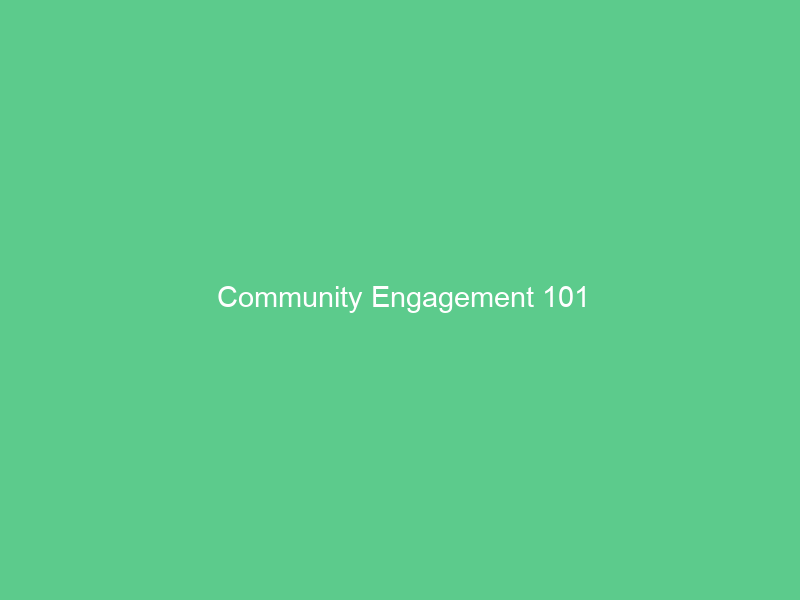
Community engagement entails increasing involvement within long-term and sustainable projects by engaging communities through various strategies and discourse that foster participation.
Informative participation keeps residents up-to-date with urban planning developments and decisions. Administrative websites, community engagement platforms, and awareness campaigns can all help with this goal.
This approach enhances democratic principles by giving citizens an input into public policy-making processes. However, building trust takes consistent effort and dedication if it’s going to succeed over time.
1. Establishing Trust
Establishing trust through open communication and showing genuine care for the wellbeing of the community is paramount when engaging with it.
At its core, democratic participation involves giving everyone an equal voice in decisions that affect them – this may involve setting up advisory panels or collaborative projects; moreover, partnerships should include agreements outlining roles, responsibilities and power dynamics between members of their group.
Final Step: It is crucial to share results and promote continuous improvement. This can be accomplished by documenting feedback and using software specialized in data analysis to detect trends; once identified, these insights should be implemented in order to further enhance engagement processes.
2. Identifying Stakeholders
Understanding your audience and stakeholders to craft an engagement strategy requires taking the time to analyze how best to reach each group. Documenting efforts provides a systematic method for analyzing outcomes and learning for future initiatives.
Stakeholders should be prioritized based on their interest and influence over time in regards to an effort. A useful method for doing this is using an Interest-Influence Grid.
Core stakeholders of an issue include those directly affected by it and those with relevant local knowledge and perspectives – this may include people and families struggling with mental health, harm reduction providers, police officers’ unions, community organization leaders and legislators.
3. Developing a Strategy
Community engagement is the practice of building relationships between organizations and their constituents, or stakeholders, which entails gathering input from people in order to guide decision making and foster collaboration. Community engagement has proven an essential way of addressing problems while simultaneously realizing positive results.
Planning an engagement strategy requires meticulous consideration. This involves determining your desired community engagement objectives and how it supports your organization’s mission, understanding your community’s characteristics and establishing trust through open dialogue and honest interactions.
Develop an engagement program by identifying any barriers that prevent community members from participating. This may involve including multiple language and accessibility accommodations as part of the plan.
4. Recruiting Community Members
Community engagement involves creating solutions that support collaboration among members of a given community, with organizations being transparent in their operations and actively engaged with the people within that group. To do this, communication must remain an ongoing part of this endeavor.
Host community events that showcase the benefits of membership. These can include interactive team-building exercises or tours. Assign especially active members a recruitment role by giving them special perks when recruiting newcomers.
Create a free membership level for people who would like to participate, but are unable to pay full dues. Over time, these members often become the most loyal participants who attract even more paying subscribers.
5. Developing a Communication Plan
Addressing community issues such as downtown revitalization, removal of invasive plant species or community planning requires building and managing long-term relationships. Utilizing SNA software to generate network maps allows users to identify key influencers and connectors within their communities that should be prioritized during engagement processes.
Establishing clear goals in a community engagement plan is vital to its success, so make sure yours are specific, measurable, attainable, relevant, and time-bound. Also important is setting up a system for collecting feedback both externally and internally from community members; doing so can provide new insights that enhance projects underway – this may take the form of surveys, emails updates, meetings or project dashboards.
6. Developing a Post-Engagement Analysis
Community engagement is a broad term that encompasses various strategies and methods used to involve communities in decisions, relationships and problem-solving processes. While undertaking such an endeavor can be complex and time consuming, preparation is the key to its success.
Gathering data metrics into one dashboard provides a more holistic perspective and makes it easier to spot patterns and recurring behaviors as well as derive insights for evaluating and increasing engagement.
Network analysis (SNA) metrics such as centrality and betweenness can help you assess who exerts the greatest influence within your networks, leading to strategic structures like advisory panels or working groups being established.

